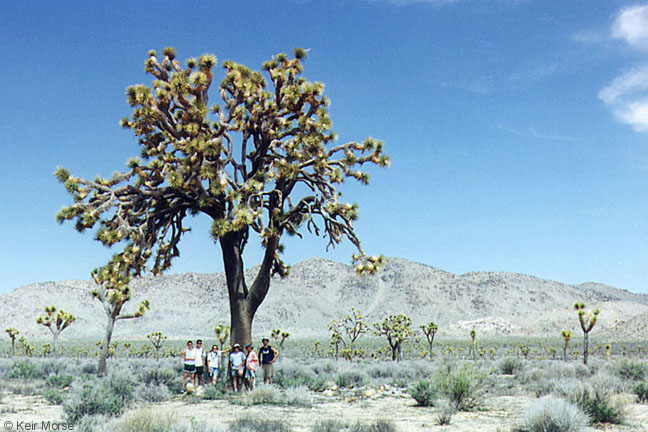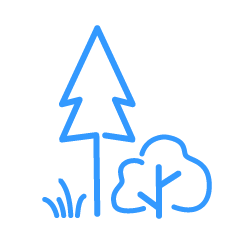
The Joshua tree is believed to be among the oldest living plants in the desert. One 60-foot tall tree is estimated to be 1,000 years old [1].
FAMILY
Asparagaceae, together with garden asparagus
RANGE
The Mojave Desert of southwest California, Arizona, Nevada, and Utah
Important Environmental Factors

Moderate to high elevation (>1,500 meters above sea level)

Zero or very high tree canopy cover

High seasonal variation in temperature
Ecology
Joshua tree is a striking member of the Agave family endemic to the Mojave Desert. The average individual grows 20-40 feet tall, depending on the local climate [1]. Its trunk is fibrous, like that of a fan palm. Between March and May, Joshua trees produce large flowers, 8-20 inches in length, that are only pollinated by one species of moth, the yucca moth (Tegeticula synthetica). Its seeds are mostly spread by rodents like the white-tailed antelope squirrel, which hoard the seeds in caches [2]. Other small birds mammals use the Joshua tree for food and shelter as well, including woodpeckers, woodrats, jackrabbits, and kangaroo rats.
Human Uses
Local Native Americans have had several uses for the Joshua tree. The long, hardy leaves, 6-14 inches in length, were woven into baskets or sandals [3]. The edible flower buds and seeds could be eaten raw or roasted. Later on, European immigrants cut down Joshua trees and used them to build fencing and corrals, or to fuel steam engines.
Threats
Because Joshua trees are endemic to a relatively limited area, research suggests that climate change will have a major impact on the distribution of Joshua trees [4]. Much of its current habitat will become unsuitable, and though new areas will become more suitable, it is uncertain whether Joshua tree populations will be able to move with these changes. Fire has become a more immediate threat as well. Since 1965, wildfires have increased in size and frequency in the Mojave Desert. This is due partly to the spread of invasive grasses, which provide ample fuel for fires.

Data source:
Species records provided by Calflora and iNaturalist.
References: